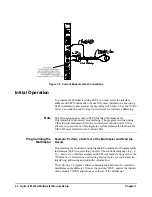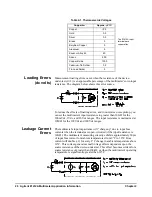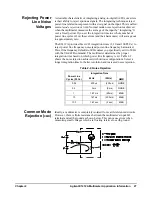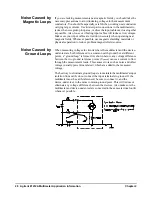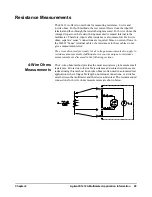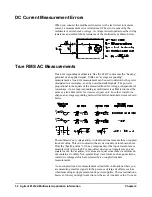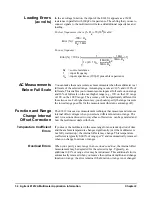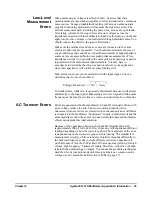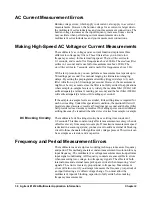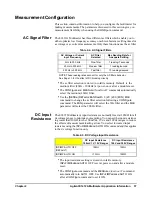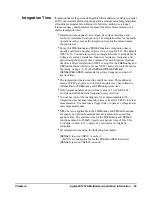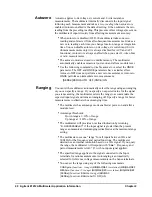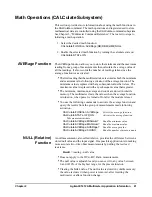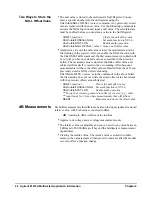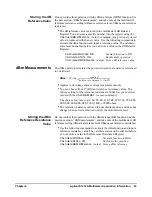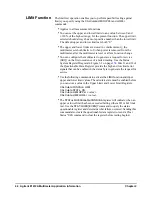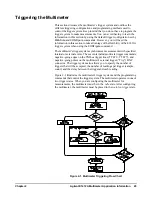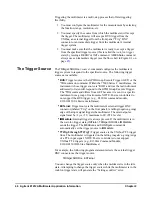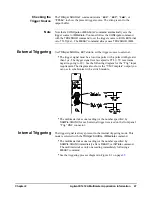
Agilent E1412A Multimeter Application Information
33
determine this value by combining results from dc and ac measurements as
shown below. You should perform the dc measurement using at least 10
power line cycles of integration (6 digit mode) for best ac rejection
Crest Factor Errors
(non-sinusoidal
inputs)
A common misconception is “if an ac multimeter is a true
RMS
instrument,
the multimeter's sinewave accuracy specifications apply to all waveforms.”
Actually, the shape of the input signal can dramatically affect measurement
accuracy. A common way to describe signal waveshapes is
crest factor
.
Crest factor of a waveform is the ratio of its peak value to its
RMS
value.
Common Crest Factors
The crest factor for a sine wave is
=1.414. For a triangular wave the crest
factor is
= 1.732. For a square wave with pulse width t and duty cycle T,
(see the graphic in the previous section), the crest factor is
.
For a pulse train, the crest factor is approximately equal to the square root of
the inverse of the duty cycle. In general, the greater the crest factor, the
greater the energy contained in higher frequency harmonics. All multimeters
exhibit measurement errors that are crest factor dependent. E1412A crest
factor errors are shown in the AC Characteristics Accuracy Specifications
listed in Appendix A with the exception that crest factor errors are not
specified for non sine wave input signals below 100Hz when using the slow
ac filter (3Hz filter).
You can estimate the measurement error for a non-sinusoidal input signal
shown below:
Total Error = Error (sine) + Error (crest factor) + Error (bandwidth)
Error (sine)
: error for sinewave as shown in Appendix A, Specifications.
Error (crest factor)
: crest factor additional error as shown in Appendix A.
Error (bandwidth)
: estimated bandwidth error as shown below.
C.F.
= signal's crest factor
f
= signal's fundamental frequency
BW
= multimeter's -3dB bandwidth
(1MHz for the E1412A)
Example
Calculate the approximate measurement error for a pulse train input with a
crest factor of 3 and a fundamental frequency of 20kHz. For this example,
assume the multimeter's 90-day accuracy specifications:
(0.05% + 0.03%).
Total Error = 0.08% + 0.15% + 1.4% = 1.6%
RMS
ac
dc
+
ac
2
dc
2
+
=
2
3
T
t
---
ERROR(bandwidth)
-(C.F.)
2
f
4
BW
------------------------
100%
=
Summary of Contents for Agilent E1412A
Page 2: ......
Page 10: ...8 Contents Notes...
Page 14: ...12 Notes...
Page 15: ...13 Notes...
Page 16: ...14 Notes...
Page 26: ...24 Agilent E1412A Multimeter Module Setup Chapter 1 Notes...
Page 194: ...192 Agilent E1412A Multimeter Error Messages Appendix B Notes...
Page 201: ...Index 199 Index Agilent E1412A User s Manual and SCPI Programming Guide...




